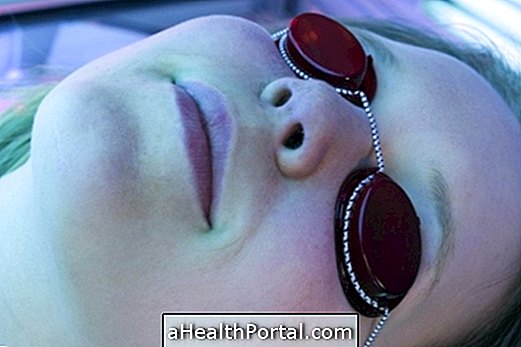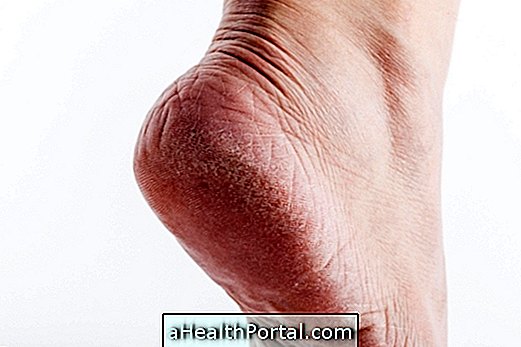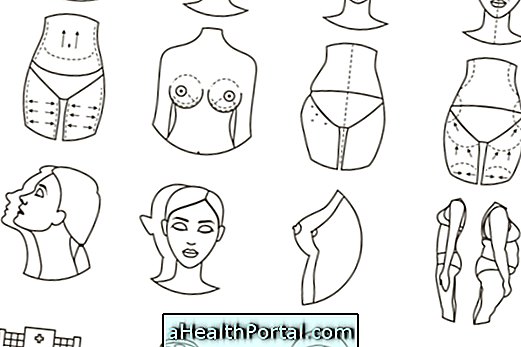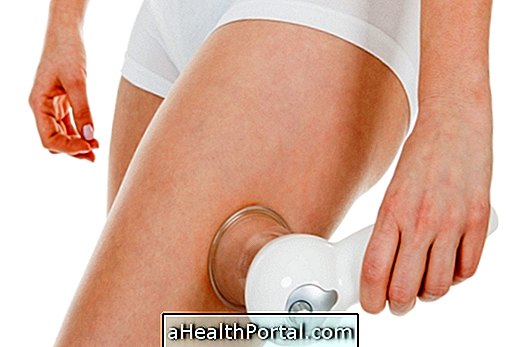Laser hair removal is the best method to eliminate unwanted hair from various regions of the body, such as armpits, legs, groin, intimate area and beard, so definitely.
Laser hair removal eliminates more than 90% of hair, requiring about 8 to 10 sessions to completely remove hair from the treated area, and only 1 or 2 sessions per year as a form of maintenance. These maintenance sessions are necessary because the cells can regenerate providing the necessary conditions for hair growth again. It is recommended that the 1st maintenance session be done after hairs come back, which varies from one person to another.

The price of each laser hair removal session varies between 150 and 250 reais, but it is possible to find promotional packs at the hair removal centers themselves or on the internet at collective purchasing sites, for example.
How Laser Hair Removal Works
In this type of epilation, the therapist will use a laser or pulsed light device, which emits a wavelength that reaches the place where the hair grows, damaging it.
The result is that the hair in that region will have a hard time reappearing, but as the body can regenerate it takes more than one session to ensure that the hair bulb is actually eliminated.
Does Laser Hair Removal Hurt?
During the treatment it is normal to feel a little pain, as if they were some chopped on the spot, but it is possible to reduce this discomfort using an anesthetic ointment before the procedure. The areas where you feel the most pain are those that have more hair and thicker, but these areas are where the results are better and faster, requiring fewer sessions.
Who can do the laser hair removal
All healthy individuals, who have no chronic disease, and who are over 18 years can do the laser hair removal. Currently even individuals with brown, mulatta and black color can do the laser hair removal, and should use the indicated equipment, which in this case is the alexandrite laser.
Before performing the laser hair removal should be taken care of as:
- Have the skin properly hydrated because the laser acts better;
- Do not perform hair removal that plucks the hair by the root days before laser hair removal, because the laser should act exactly on the root of the hair;
- Do not have open wounds in the place where epilation will be done;
- Naturally darker areas such as armpits can be cleared with creams and ointments prior to the procedure for a better result.
In people who lighten body hair can do laser hair removal because the laser acts directly on the root of the hair, which never changes color.
After a treatment session, some skin care is needed to prevent the skin from becoming tarnished and dark, such as using ointments and lotions to remove the redness that remains where the laser was applied, and avoid exposure to the sun, in addition to always using sunscreen in areas that can be naturally exposed to the sun as face, neck, arms and hands.


How many sessions to do?
The number of sessions varies according to the skin color, hair color, hair thickness and size of the area that will be depilated.
In general, individuals with light skin and thick, dark hairs require fewer sessions than people with dark skin and fine hair, for example. The ideal is to buy a pack of approximately 5 sessions and if you need to buy more sessions.
The sessions should be performed once a month and when the hair grows again, it is advised to shave with a razor, if it is not possible to wait until the day of the laser treatment.
Contraindications of laser hair removal
The contraindications of laser hair removal include:
- Uncontrolled diabetes, which leads to changes in skin sensitivity;
- Uncontrolled hypertension because there may be a peak of pressure;
- Epilepsy, because it can give rise to an epileptic crisis;
- Pregnancy, on the belly or groin area;
- Vitiligo, because new areas of victimization may arise, where the laser is used;
- Skin diseases, such as psoriasis, that the area being treated has active psoriasis;
- Open wounds at the laser exposure site;
- In case of cancer, during treatment.
Laser hair removal can be performed on almost all areas of the body with the exception of the inner part of the ears, the lower part of the eyebrows and directly over the genitals.






















